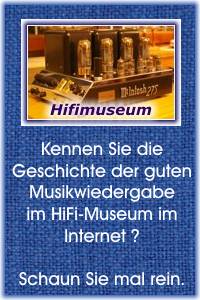Erläuterungen zu diesen 1948er US-AUDIO Seiten
Die hier stehenden amerikanischen Artikel aus 1948 (aus der US-AUDIO) sind teilweise sehr gewöhnungsbedürftig, weil sie erstens aus einer längst vergangenen Zeit stammen und zweitens, weil dort in den USA ganz "anders" gedacht wurde als bei uns in Old Germany oder in Europa.
Vergleichbar mit unseren deutschen Hifi-Magazinen etwa ab 1962 ist jedoch, daß auch diese Zeitschrift ihre Anzeigen- Kunden und -Leser (be- oder ab- ?) werben mußte.
Die Ausgaben der US-AUDIO von 1947 bis 1958 liegen in teilweise ganz miserablen PDF-Dateien vor, in denen die Reihenfolge der Seiten teils völlig wirr ist. Der Aufwande, einen einzigen Artikel komlett zusammenzubauen, ist daher erheblich. Die Fotos sind so gräuselig schlecht, daß sie nur in Ausnahmefällen eingebaut werden.
.
EDITOR'S REPORT
TV OR NOT TV
• IN oru January issue we announced, that we planned to run a short section in this magazine devoted to the operational problems of video engineering. This decision had been reached as a result of conferences with many prominent audio engineers in the broadcast field, where the operational end of video is now being handled by audio men.
However, we have been deluged with letters and phone calls asking that we confine this magazine solely to audio. Apparently most of our readers want no part of video engineering, so until we see a good deal more enthusiasm for video data than now exists, we intend to stick to our present editorial policy. More letters on this topic are invited.
.
IRE CONVENTION
• THE "Institute of Radio Engineers" has just concluded its largest national convention and engineering show at the Hotel Commodore and Grand Central Palace in New York City. The program committee is to be congratulated upon the smoothness and efficiency with which the entire convention was handled.
Each year this convention and show has grown in magnitude until now it far exceeds anything that most of us had dreamed of ten years ago. Registration this year totalled over 15,000.
Some of the exhibits in the show were a bit skimpy (dürftig), reflecting the shortages still existing in many manufacturer's lines, but there was much that was new and interesting. One would never realize from viewing the many excellent exhibits that business isn't very good with many manufacturers. (Für einige Hersteller läuft es in 1948 nicht gut.)
Of special interest to the audio engineer were the displays of many manufacturers, among them being the speakers, the program switching console, and the new disc-jockey's console in the Western Electric exhibit; the many recorders from the tiny Wagner-Nichols instrument which now embosses an hour-long program on a six-inch vinylite disc at 14 rpm to the extremely professional Rangertone Tape Recorder of superlative quality, with intermediate types using discs, wire, and tape; the new phonograph pickups of high quality reproduction; the sonic analyzer of Panoramic which sweeps the entire audio spectrum once per second and presents the information on a c-r screen with a scale proportional to db; the audio sweep oscillator of "Instrument Electronics"; the new pocket noise meter of H.H. Scott, along with his demonstrations of the Dynamic Noise Suppressor Amplifier; not to mention the institutional exhibits of RCA and the two lovelies (die zwei "Hübschen", die neuen Messe Hostessen) who personally pinned a white carnation on every comer.
The "Radio Engineering Show" is always the place where the visitor is bound to meet some old friend or associate from across the country; old times and new ideas are discussed; and many a pleasant get-together is consummated. It is surprising, however, to note the over-all seriousness of the IRE Convention - most of the engineers are here for business, and they make the most of the opportunity. The Show is always a beautiful sight, either to the professional or to the non-technical, and the exhibits are calculated to interest every visitor.
.
AUDIO NEWS
• THE first technical session of the "Audio Engineering Society" took place on March 11th (1948) at the RCA-Victor Recording Studios in New York City. More than two hundred audio engineers crowded into every bit of available space to listen to an excellent talk and demonstration by Dr. Harry F. Olson of RCA Laboratories. Dr. Olson demonstrated a new electronic pickup, using a small diode, which is designed to give high-fidelity reproduction and to provide an output of 0.5 volt across 10,000 ohms. The record pressure can be as little as 15 grams. (Wir sind immer noch in 1948 in der Schellack-Zeit)
It is difficult to use much less than this and maintain proper tracking, but the pickup itself does not even require this much pressure. The new Olson duo-cone speaker was also demonstrated, and sounded very well indeed.
The "New York Times" gave an excellent write-up of the meeting, describing at length, if somewhat inaccurately, the operation of the new pickup. Dr. Olson has promised to prepare a technical paper for Audio Engineering describing this new device, which is expected to be in production sometime this summer.
J. H. P.

